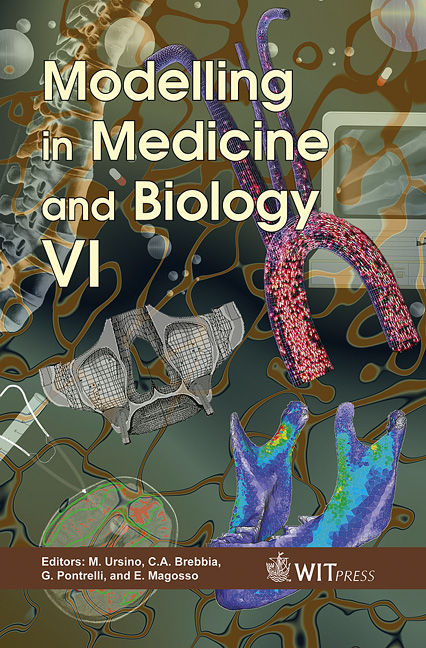The Relation Between Stroke Work And End-diastolic Volume In The Ventricles
Price
Free (open access)
Transaction
Volume
8
Pages
9
Published
2005
Size
294 kb
Paper DOI
10.2495/BIO050121
Copyright
WIT Press
Author(s)
R. M. Shoucri
Abstract
Several experimental studies have been published in the literature about the apparent linearity of the relation between stroke work (SW) and end-diastolic volume (Ved), which is usually referred to as the preload recruitable stroke work (PRSW). Experimental results seem to suggest that in the study of the performance of the ventricles the PRSW relation gives more consistent results compared to the variability of the parameters based on the end-systolic pressurevolume relation (ESPVR). In this theoretical study it is shown that the relation between SW and Ved is non-linear. Moreover it is shown that this relation can be described by the same parameters used to describe the ESPVR. Applications to experimental data published in the literature are discussed. Keywords: preload recruitable stroke work, end-systolic pressure-volume relation, preload of left/right ventricular ejection, pressure-volume relation in the ventricles, active force of the myocardium, peak isovolumic pressure. 1 Introduction The relation between stroke work (SW) and end-diastolic volume (Ved) is also called the preload recruitable stroke work (PRSW) (Glower et al [1], Little and Cheng [2]). The PRSW relation shows an apparent linearity and is considered as a way to express the Frank-Starling mechanism; the larger the initial stretch of the cardiac muscle, the stronger is the contraction of the myocardium. It can be used to describe the contractility of the cardiac muscle and appears to give more consistent results than the parameters derived from the end-systolic pressurevolume relation (ESPVR) (Suzuki et al [3], Karunanithi et al [4]).
Keywords
preload recruitable stroke work, end-systolic pressure-volume relation, preload of left/right ventricular ejection, pressure-volume relation in the ventricles, active force of the myocardium, peak isovolumic pressure.





